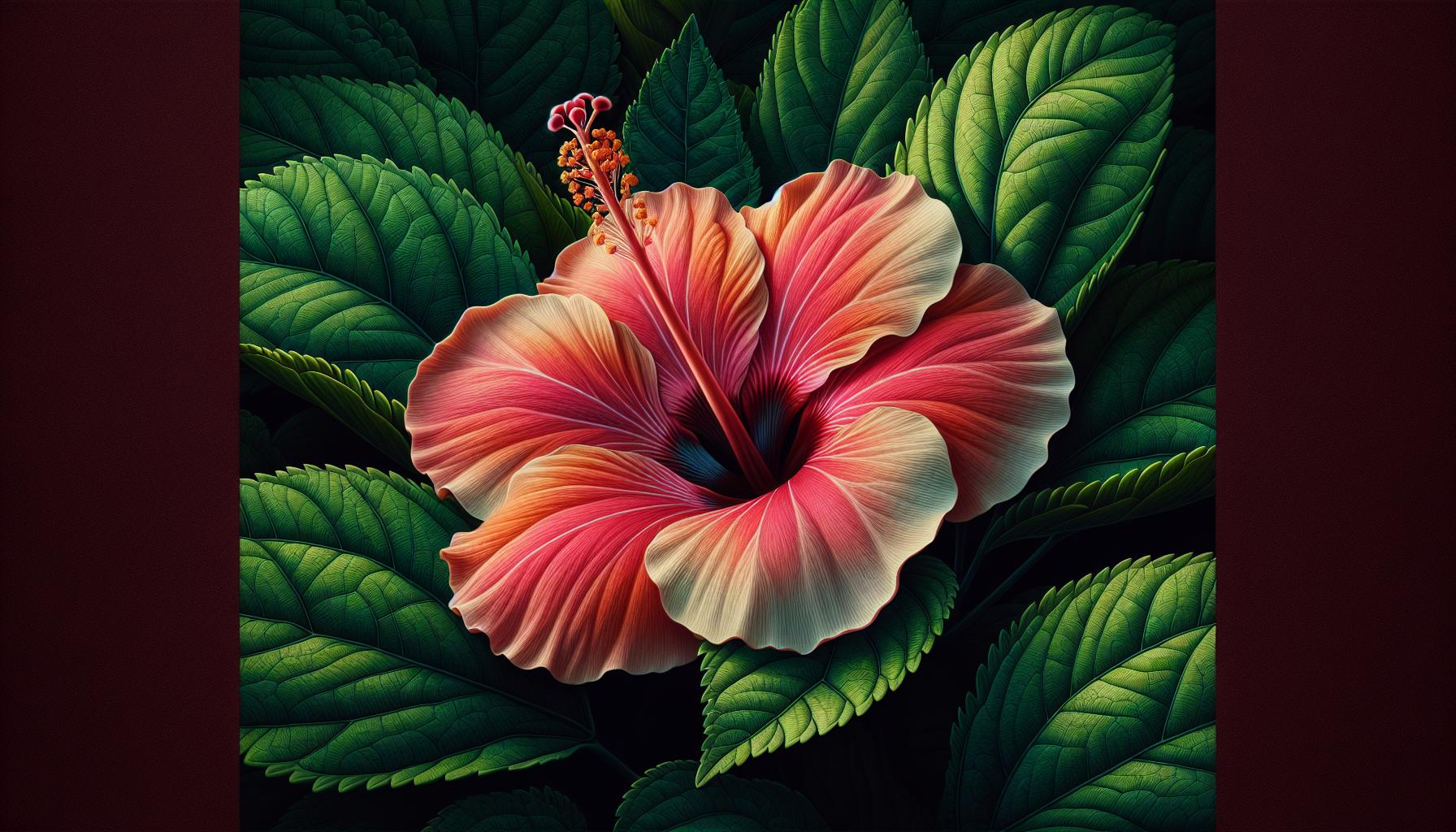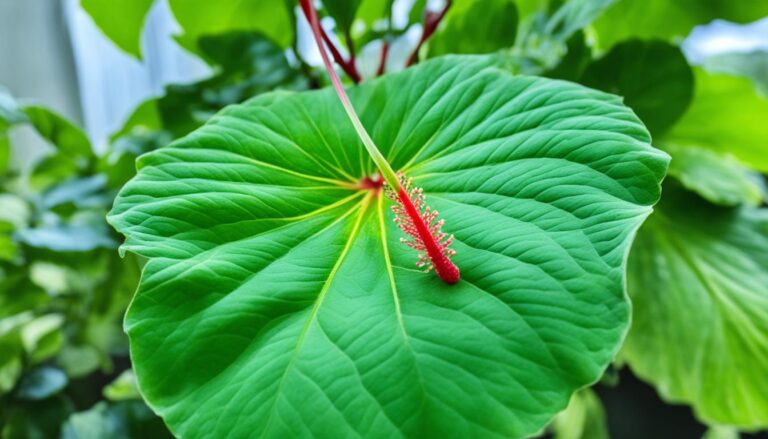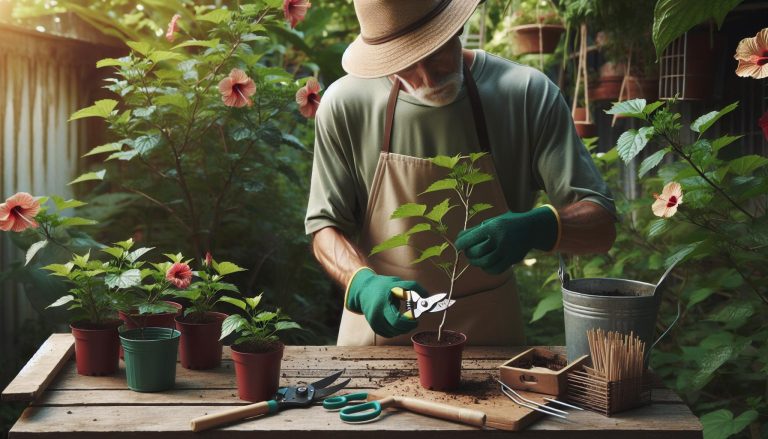Hibiscus Bloom Duration: Tips to Extend Flowering Time
In the world of vibrant flowers, hibiscus holds a special place in our hearts. Its large, colorful blooms are a sight to behold, transforming gardens into a tropical paradise. But as we admire their beauty, we often find ourselves wondering just how long we can expect these flowers to grace our gardens. It’s a question that not only garden enthusiasts but also casual admirers ask, and for good reason. Hibiscus flowers are not just beautiful; they’re a symbol of warmth and hospitality in many cultures.
Understanding the lifespan of a hibiscus bloom is crucial for anyone looking to add a splash of color to their outdoor or indoor space. Whether you’re a seasoned gardener or someone who’s just starting to explore the world of plants, knowing how long these flowers last can help you plan and maintain your garden more effectively. So, let’s dive into the world of hibiscus and uncover the secrets behind their blooming cycle.
Key Takeaways
- A typical hibiscus flower’s lifespan ranges from one to two days post-bloom, with some varieties lasting up to three days under optimal conditions, despite the plant’s ability to flower prolifically across several months, primarily from late spring through early fall.
- The duration and health of hibiscus blooms are significantly influenced by environmental factors including light exposure, temperature, watering practices, soil quality, and fertilization, with ideal conditions promoting longer-lasting, vibrant flowers.
- Proper care practices such as consistent watering (without over-watering), ensuring at least 6-8 hours of direct sunlight daily, using well-draining rich soil, and fertilizing with a balance rich in potassium are crucial for extending the beautiful display of hibiscus flowers.
- Addressing potential issues promptly, including pests such as aphids and whiteflies, fungal infections, and nutrient deficiencies, is essential for maintaining the health and blooming capability of hibiscus plants.
- Implementing propagation techniques like using stem cuttings or seeds can rejuvenate and enhance the garden’s hibiscus population, ensuring a continuous display of beauty.
- Adjusting care and maintenance with the changing seasons—including pruning, fertilization, watering adjustments, and protection measures—is vital for sustaining hibiscus health and optimizing their blooming period year-round.
Understanding Hibiscus Blooms
Building on our journey through the enchanting world of hibiscus flowers, we delve deeper into what makes these blooms special. Knowledge about the lifecycle and the external factors affecting the duration of hibiscus flowers enables gardeners to nurture their plants better and plan their gardens more effectively. Let’s explore the intricacies of hibiscus blooms, from their opening to the eventual wilting.
The Lifecycle of a Hibiscus Flower
The lifecycle of a hibiscus flower is a testament to nature’s transient beauty. From bud to bloom, each flower undergoes a fascinating journey. Typically, a hibiscus flower unfurls its petals early in the morning, showcasing its vivid colors and striking form. Depending on the hibiscus variety and the growing conditions, these magnificent blooms grace our gardens with their presence for only a day or two before they begin to wilt. In optimal conditions, some species may retain their allure for up to three days. However, it’s the plant’s prolific blooming habit that ensures a continuous display of color throughout the blooming season, with new flowers emerging as others fade.
Factors That Affect Bloom Duration
Several factors can influence how long a hibiscus flower lasts, ranging from environmental conditions to the plant’s care regimen. Recognizing these can help gardeners maximize the bloom time of their hibiscus plants:
- Light Exposure: Hibiscus flowers thrive in bright sunlight. Optimal sunlight exposure ensures vibrant blooms that may last longer.
- Temperature and Humidity: While hibiscus plants prefer warm temperatures, extreme heat can shorten bloom duration. Moderate humidity levels are also preferable.
- Watering Practices: Consistent watering helps prolong the life of hibiscus flowers. Dry spells can lead to shorter bloom times.
- Soil Quality: Rich, well-draining soil nourishes the plants, potentially extending the lifespan of each flower.
- Fertilization: Regular feeding with a balanced fertilizer supports the overall health of the plant, including its blooms.
- Pruning: Proper pruning encourages healthy growth and can influence the blooming cycle, ensuring that the plant focuses its energy on producing and sustaining flowers.
Understanding these elements and how they interact with the hibiscus plant empowers gardeners to create ideal conditions that not only promote longer-lasting blooms but also enhance the overall health and beauty of their plants. By paying attention to the lifecycle of hibiscus flowers and the factors affecting their bloom duration, we can enjoy their stunning displays to the fullest.
How Long Does a Hibiscus Bloom Last?

Variations Among Species
Understanding the lifespan of hibiscus blooms begins with recognizing the diversity among species. Generally, a single hibiscus flower lasts for about one to two days, once it fully opens. However, the overall blooming period of a hibiscus plant can stretch across several months, primarily from late spring through early fall, depending on the species.
For instance, the tropical hibiscus (Hibiscus rosa-sinensis) is renowned for its vibrant, large blooms that, under ideal conditions, grace a garden with continuous flowers throughout the year in warmer climates. On the other hand, the hardy hibiscus (Hibiscus moscheutos), suitable for cooler climates, tends to have a more concentrated blooming period during the summer months.
Impact of Environmental Conditions
The duration and frequency of hibiscus blooms are significantly influenced by environmental conditions. Optimal sunlight, for example, is crucial; hibiscus plants thrive in areas where they can receive at least six to eight hours of direct sunlight daily. This exposure maximizes photosynthesis, encouraging more prolific and longer-lasting blooms.
Temperature also plays a pivotal role. Hibiscus flowers prefer warm conditions, which is why they peak during the warmer months. Should temperatures dip below 50°F (10°C), the plant’s blooming cycle might slow down or temporarily halt, resuming once conditions are favorable.
Watering practices further affect bloom longevity. Hibiscus plants require consistently moist soil, yet they detest waterlogged roots. Balancing this need is key, as too much or too little water can stress the plant, leading to shorter bloom lifespans or fewer blossoms.
Finally, soil quality and fertilization contribute to the health of hibiscus blooms. A well-draining, rich soil coupled with a regular fertilization schedule that provides essential nutrients like potassium and phosphorus supports vibrant, durable flowers. Pruning, too, cannot be overlooked, as removing dead blooms and leaves encourages new growth, potentially extending the blooming period.
By maintaining these environmental factors, gardeners can enjoy the exquisite beauty of hibiscus flowers for the maximum time nature allows.
Caring for Hibiscus to Prolong Blooms

Best Practices for Watering
Ensuring that hibiscus plants receive the correct amount of water is key to prolonging their blooms. Hibiscus prefers a consistent moisture level, neither waterlogged nor too dry. Typically, watering them deeply once a week suffices, but in hotter conditions, they might require more frequent watering. It’s crucial to allow the soil to partially dry between waterings, as overwatering can lead to root rot, which severely impacts the plant’s blooming capabilities. For those in regions with a lot of rainfall, ensuring good drainage is essential. Using a moisture meter can provide a more accurate gauge of when it’s time to water again.
The Role of Sunlight and Temperature
Hibiscus flowers thrive in full sun to partial shade, needing at least 6 hours of direct sunlight daily to produce vibrant blooms. The ideal temperature range for hibiscus is between 60°F and 90°F, which supports continuous bloom cycles, especially in tropical hibiscus varieties. When temperatures exceed 95°F, blooms might diminish, and the plant may require additional shade to protect it. Conversely, if the temperature drops below 50°F, it’s advisable to either move container plants indoors or provide protection for outdoor plants to prevent bloom loss.
Fertilization and Soil Requirements
Nutrient-rich, well-draining soil significantly contributes to the health and longevity of hibiscus blooms. Incorporating organic matter, such as compost or peat moss, into the soil can enhance its structure, ensuring adequate drainage and nutrient availability. Hibiscus plants benefit from regular fertilization during the growing season. Selecting a fertilizer high in potassium and low in phosphorus supports vigorous bloom production without compromising the plant’s health. Applying a slow-release fertilizer every few months, coupled with periodic use of a water-soluble fertilizer, can provide the consistent nutrients needed for sustained blooming. Additionally, maintaining a slightly acidic to neutral soil pH, around 6.5 to 7.0, aligns with the optimal conditions for hibiscus plants to flourish and produce an abundance of flowers.
Troubleshooting Common Issues

In our exploration of hibiscus blooms, we’ve highlighted the importance of various environmental factors and care practices in maximizing bloom duration. However, even with diligent care, hibiscus plants can sometimes face challenges that affect their health and flowering. In this section, we’ll dive into common issues that may arise and provide guidance on how to address them effectively.
Dealing With Pests and Diseases
Pests and diseases can significantly impact the health of hibiscus plants and subsequently reduce their bloom time. Aphids, spider mites, and whiteflies are among the most common pests that attack hibiscus plants. They suck sap from the leaves, weakening the plant and interfering with its ability to produce and sustain blooms.
To combat these pests, we recommend regularly inspecting your hibiscus plants for signs of infestation. If pests are detected, applying insecticidal soap or neem oil can help eliminate them without harming the plant. Additionally, ensuring your hibiscus is in a well-ventilated area can prevent the conditions that attract pests.
Diseases like fungal infections, including root rot, and leaf spot can also detract from the plant’s vitality. Proper watering practices, avoiding overhead watering, and ensuring good drainage can help prevent these diseases. If your hibiscus does contract a fungal infection, applying a fungicide according to the product’s instructions can help manage the disease.
Addressing Nutrient Deficiencies
Nutrient deficiencies can also hinder the blooming potential of hibiscus plants. Symptoms of nutrient deficiencies include yellowing leaves, stunted growth, and reduced blooming. A lack of essential nutrients such as nitrogen, phosphorus, and potassium is often the culprit behind these issues.
To address nutrient deficiencies, we recommend conducting a soil test to determine the specific nutrients lacking in your soil. Based on the results, applying a balanced, slow-release fertilizer that’s specially formulated for flowering plants can provide the necessary nutrients for your hibiscus to thrive. Additionally, incorporating organic matter into the soil, such as compost, can improve soil quality and nutrient availability.
Regularly monitoring your hibiscus for signs of pests, diseases, and nutrient deficiencies, and taking prompt action to address these issues, ensures that your plants remain healthy. Healthy plants are more likely to produce vibrant, long-lasting blooms, fulfilling your garden’s aesthetic and cultural significance aspirations.
Extending the Beauty of Hibiscus Blooms

Having established the importance of optimal light exposure, temperature, watering, soil quality, fertilization, and pruning in influencing the duration of hibiscus blooms, along with the significance of addressing pests, diseases, and nutrient deficiencies, our attention now turns to extending the beauty of these vibrant flowers. Key strategies include propagation to generate new, vigorous plants and implementing a seasonal care guide to ensure year-round plant health and blooming.
Propagation Tips
Propagation stands as a reliable method to not only prolong the lifecycle of hibiscus plants but also to enhance their blooming potential. There are two primary methods for propagating hibiscus: stem cuttings and seeds.
- Using Stem Cuttings: This method involves cutting a healthy, young stem from the parent plant, ideally about 4 to 6 inches in length. We remove the lower leaves, dip the cut end in rooting hormone, and plant it in a well-draining soil mix. Keeping the soil moist and providing indirect light nurtures the cutting, helping it root and eventually grow into a robust plant capable of producing its own blooms.
- Germinating Seeds: While slower compared to stem cuttings, growing hibiscus from seeds allows gardeners to experiment with different varieties and potentially develop new hybrids. We soak the seeds in water overnight to hasten germination, then plant them in a fertile, well-draining mix, maintaining consistent moisture and warmth. Germination can take from a few weeks to a month, after which the seedlings require careful handling until they’re ready to be transplanted outdoors.
Seasonal Care Guide
Adjusting care with the seasons is crucial for sustaining hibiscus health and ensuring continuous blooms.
- Spring: In spring, we focus on pruning to remove any dead or damaged branches, stimulating new growth and eventual flowering. It’s also the time for a balanced fertilizer application to wake the plants from winter dormancy and fuel their growth.
- Summer: Hibiscus plants revel in summer’s warmth, demanding regular watering to prevent stress from heat and facilitating bloom production. Monitoring for pests and diseases is crucial during this time of high activity.
- Fall: As the weather cools, we reduce watering and cease fertilization to prepare the plants for dormancy. It’s also an ideal time to repot hibiscus if they’re grown in containers, providing them with fresh soil and a chance to root anew before winter.
- Winter: In colder regions, hibiscus plants may need to be brought indoors or provided with protection against frost. Watering is minimized to avoid rot, and pruning is halted to prevent stressing the plants.
Conclusion
We’ve explored every angle to ensure your hibiscus blooms last as long as possible. From understanding the essential factors that influence bloom duration to troubleshooting common issues and diving into propagation methods, we’ve covered it all. Remember, seasonal care is key to maintaining your hibiscus’s health and maximizing its blooming potential. Whether it’s pruning in the spring or protecting it through the winter, each step is a stride towards more vibrant, long-lasting blooms. Let’s embrace these practices and enjoy the stunning beauty of hibiscus flowers for seasons to come.






